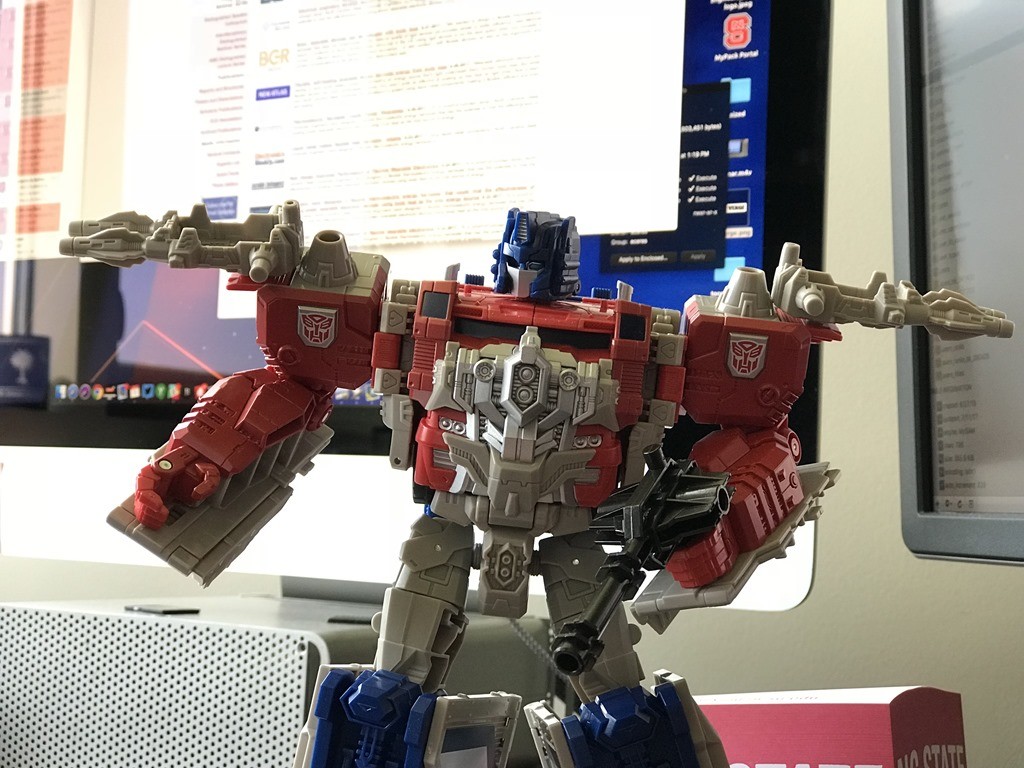
From Transformers to Autonomous Systems
This is a guest post by Edgar Lobaton – Autonomous systems are becoming a reality in our everyday lives. A few examples that most of us have seen in the news include autonomous vehicles such as the Google Car, and autonomous stores such as Amazon Go. All of these systems require sophisticated sensing, machine learning and artificial intelligence in order to make them work, which fascinates me.
July 11, 2017 ![]() NC State ECE
NC State ECE
Editor’s note: This is a guest post by Edgar Lobaton, an associate professor in NC State’s Department of Electrical and Computer Engineering. This is one in an ongoing series of posts from NC State researchers that address the value of science, technology, engineering and mathematics.
Autonomous systems are becoming a reality in our everyday lives. A few examples that most of us have seen in the news include autonomous vehicles such as the Google Car, and autonomous stores such as Amazon Go. All of these systems require sophisticated sensing, machine learning and artificial intelligence in order to make them work, which fascinates me.
My passion for machine learning and autonomous systems started when I was a little kid.
I was in my first year of elementary student in Peru, waiting diligently every weekend in front of the TV in order to catch an episode of the Transformers animated series. Sitting on my parents’ couch, hearing the classic tune describing the robots as “more than meets the eye,” the same thought would keep going around and around in my head: “I’ve got to have one.”
Growing up in a third-world country, my parents could not afford to buy Transformers toys for me. As a resourceful kid, I did the next best thing: I decided to build my own. With the limited resources I had, I started to build my own robots. At age five, I started by drawing my first Transformers on a piece of paper, cutting them out with my bright red training scissors, and then folding legs and arms in order to convert them into little squares. Not the most useful Transformers, but it was a first attempt.
A couple of years later, my dad taught me how to make cubes out of paper, so I ventured to build my first 3D Transformer. With a little ingenuity, and using some rubber bands and pins, I was able to make Transformers with movable joints. Not full transformation, but at least arms and legs could bend. Probably, nowadays, most kids can 3D print one of these at school.
By the time I was a high school student (still in Peru), I had already figured out how motors, gears, electromagnets and pulley systems worked, which allowed me to build some simple robots that could move around. However, this was still far from becoming a sentient, autonomous robotic system. What was missing was for the robots to understand their surroundings and be able to make decisions based on that information.
I had my mind set on studying mechatronics in Peru at the time. Thanks to the sacrifice of my parents, who decided to take my sisters and I to the USA in search of a better education, I was able to get into Seattle University for my undergraduate studies. I was extremely excited about this opportunity to finally make my dreams come true. As an electrical engineering student at Seattle U, I organized a team of students to attempt to get into the RoboCup competition, in which teams build robots and have them compete at playing soccer.
We built our robots from scratch and used some basic image processing in order to track their position and identify the location of the ball. From there we programmed their behavior so they could play as a team. Our robots crashed and broke all the time. They would get disconnected from the computer that controlled their motion and they would literally get lost. Sadly, we were unable to make it to the actual competition. However, I felt an overwhelming joy just seeing the robots move together toward a goal for the first time. They were finally acting on their own. Finally! It was a first example of an autonomous system that I helped make myself.
Time went on, and I decided to focus my efforts more on the sensing and machine learning aspects of my childhood dream. I have applied the knowledge that I accumulated since I was a little kid to projects involving surgical robotic systems, autonomous driving vehicles, cyborg insects, and autonomous recognition systems. These applications, and many others, have the potential to change the way we live and work. They could save lives.
My childhood dreams have led to advances that can make a difference in the real world. Dreams are important. Research is important. I am lucky enough to still continue pursuing my dream while contributing to developments in these fields of robotics – and helping to inspire the next generation of engineers.

